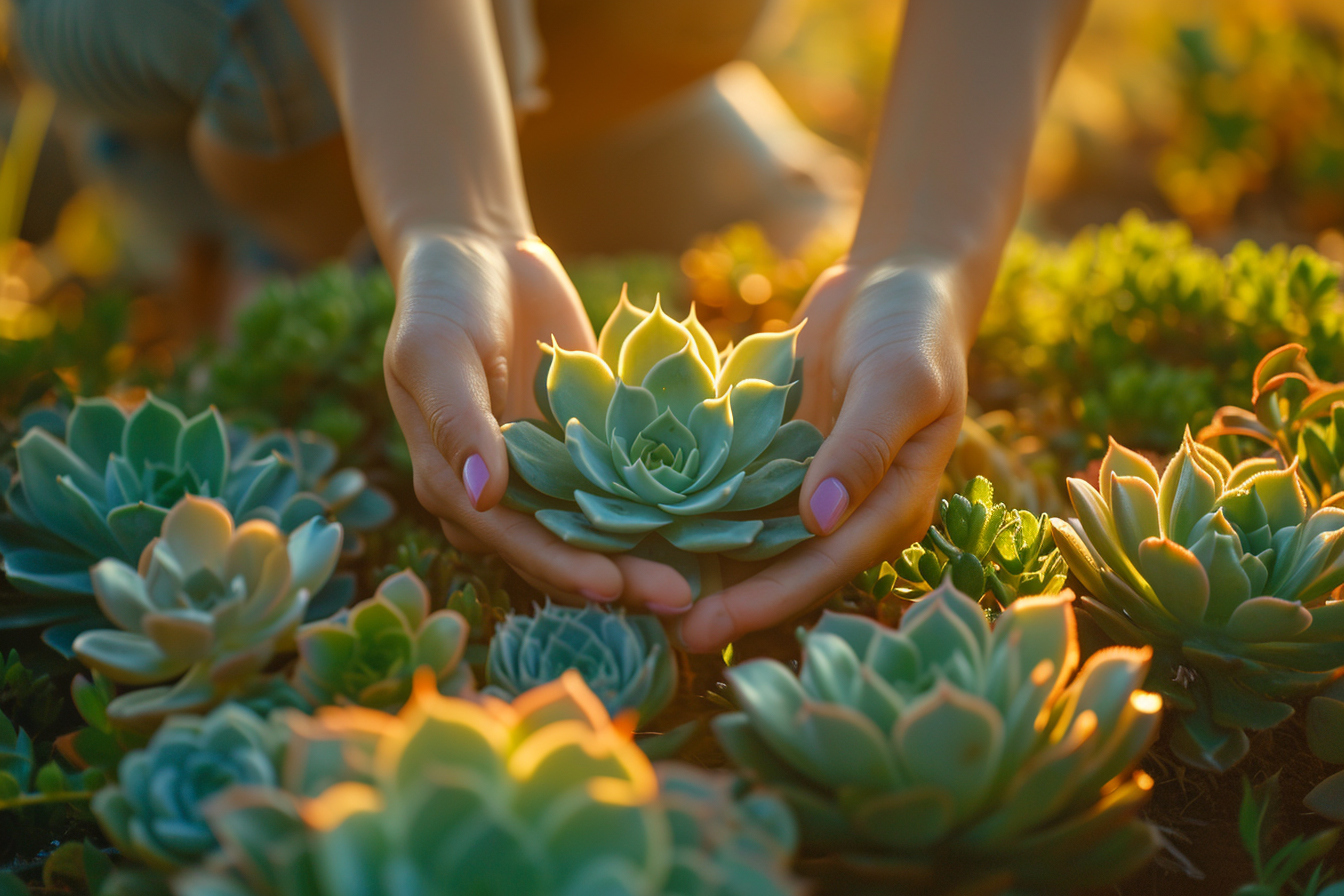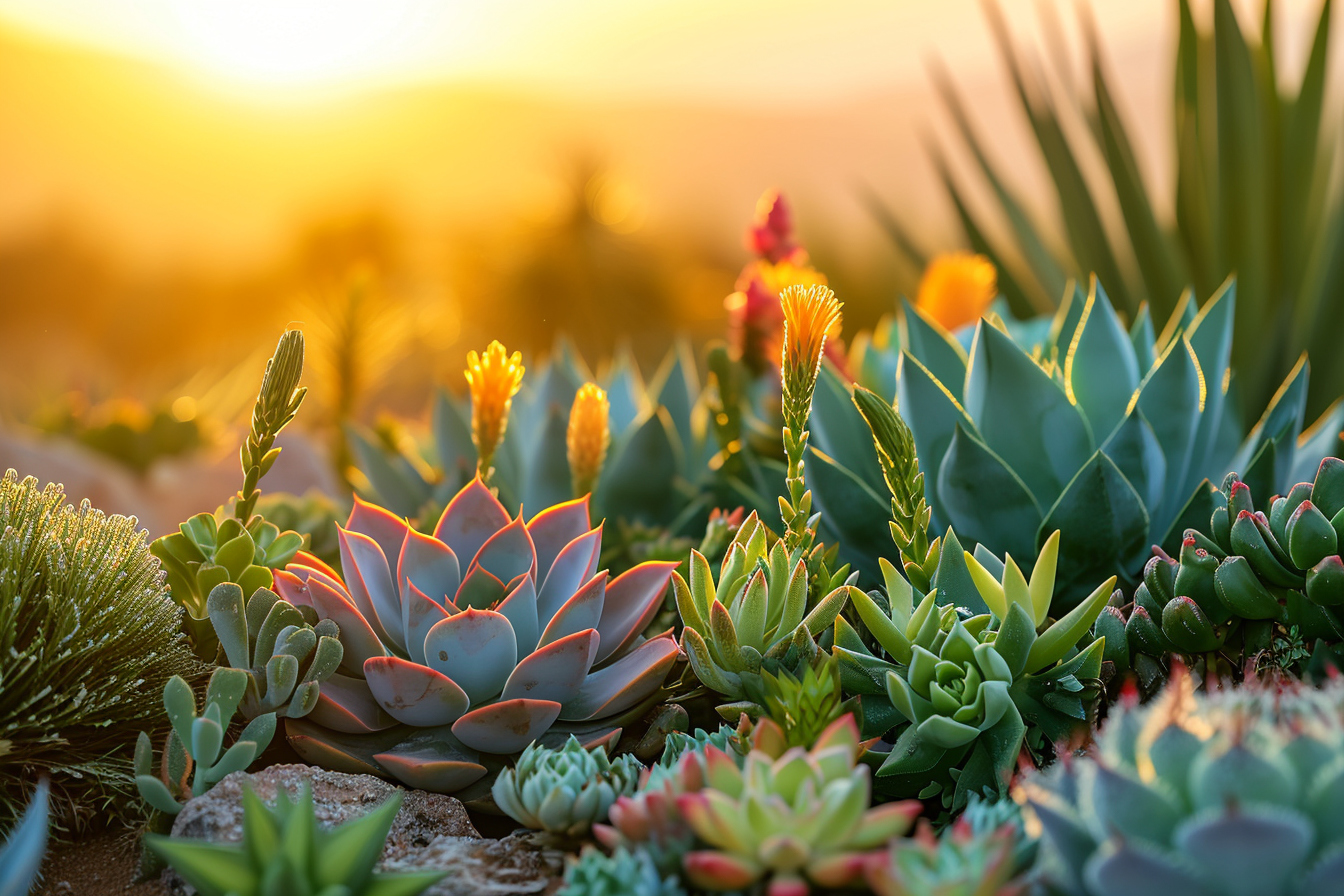Succulents are the crown jewels of desert flora, offering an array of shapes, colors, and textures that can transform any space into a verdant oasis. Designing a garden that showcases these exotic plants requires not merely horticultural know-how but also an artistic eye. Mastery over the subtleties of desert landscaping is a skill honed by understanding these resilient plants and the ecosystems they thrive in.
Understanding your canvas

Climate compatibility
Succulents are renowned for their drought tolerance, but this doesn’t mean they are impervious to environmental stressors. Successful design strategies begin with selecting species that are well-suited to the local climate. Gardeners must take into account factors such as temperature extremes, humidity levels, and seasonal variations to select plants that will thrive in their specific locale.
Soil composition and drainage
Succulents demand soil that provides excellent drainage. Heavy, clay-like soils are often unsuitable as they retain moisture, potentially leading to root rot. Enhancing the garden bed with a mix of sand, gravel, and compost can create the ideal environment for these desert dwellers.
Sunlight and shade dynamics
Cognizance of the trajectory of sunlight throughout the day is essential. While many succulents favor full sun, some can become scorched by intense heat, especially in peak summer months. Strategic positioning of plants and use of shade-generating elements is key to protecting more sensitive specimens.
Creating a cohesive design
Visual balance and composition
Harnessing the visual weight of succulents is a core element of design. Larger, more sculptural plants can serve as focal points around which smaller, filler plants are arranged. The interplay of different sizes and shapes should lead the eye to move across the garden harmoniously.
Color and texture
The palette of succulents is remarkably diverse. From the silvery-blue hues of the Echeveria to the deep purples of Aeonium, designers can craft a vibrant mosaic. Understanding how colors interact and complement each other is essential, as is the juxtaposition of varied textures. Velvety leaves of Kalanchoe can offset the glossy, almost gem-like appearance of Haworthia.
Layering and repetition
Employing layers within the garden provides depth and interest. A technique commonly used is to plant ground covers that creep between taller species, which adds to the fullness of the space. Repetition of certain forms and colors can also provide a rhythm that guides the viewer’s gaze, offering a sense of order and continuity.
Selecting the right plants
Drought-Resistant champions
Succulents such as Agave and Sempervivum are bastions of resilience, capable of withstanding prolonged dry periods. Utilizing a mix of these hardy species ensures the garden remains robust even in less-than-ideal conditions.
Showstopping specimens
Some succulents are simply showstoppers. The towering inflorescence of the Agave americana or the architectural form of the Aloe polyphylla can act as a centerpiece to rally a design around. Selecting such specimens requires foresight in regards to the space they will require when they reach maturity.
Seasonal highlights
While many succulents remain evergreen, others offer seasonal color changes or flowering periods. Including these in the garden provides a dynamic element, with shifts in the landscape as months pass.
Irrigation techniques
Effective watering systems
Although succulents are water-wise, they do require regular hydration. Drip irrigation systems can be strategically implemented to deliver water directly to the base of each plant, minimizing evaporation and ensuring each succulent receives just the amount it needs to flourish.
Rainwater harvesting
Incorporating rainwater harvesting systems not only benefits the environment but also provides succulents with natural water sources that are often more beneficial than tap water, which can contain salts and chlorine.
Integrating hardscaping elements
Natural rock and gravel
The use of rocks and gravel is not only practical for drainage and soil composition but also aesthetically pleasing. Stones can emulate a natural desert landscape and act as a canvas for the plants to stand out against.
Pathways and borders
Smooth stones or wooden borders to demarcate the succulent garden can enhance the visual appeal while also serving functional purposes. Pathways enable visitors to enjoy the garden without disturbing the plants, guiding them through the landscape.
Sculpture and art
Artistic pieces can provide an additional layer of intrigue to the succulent garden. Whether it’s a metal sculpture that mirrors the organic forms of the succulents or a colorful mural backdrop, art can complement and elevate the overall design.
Maintenance and care
Pest management
Natural pest management strategies are important to maintaining the health of the succulent garden. Encouraging predators such as ladybugs or using organic pesticides can help keep harmful pests at bay.
Pruning and grooming
Regular pruning not only maintains the desired shape of the plants but also promotes healthy growth. Removing damaged or dead material helps prevent disease and encourages new, vibrant growth.
Seasonal adjustments
As the seasons change, so might the needs of the succulent garden. Making adjustments such as providing shade during hotter months or protection from frost in colder climates is crucial to ensure the garden’s longevity.
Engaging community and educating
Workshops and demonstrations
Hosting workshops or providing demonstrations on how to care for and propagate succulents can engage the local community. Sharing knowledge helps spread the appreciation for these exotic plants and educates on sustainable gardening practices.
Garden tours
Offering tours of the succulent garden not only showcases the exquisite design but also provides an opportunity for others to draw inspiration for their own spaces. It can serve as a platform for exchanging ideas among gardening enthusiasts.
Sustenance through innovation
Renewable resources in landscaping
Embracing sustainability, the use of solar-powered lighting or repurposed materials can reduce the environmental footprint of the garden while still maintaining its aesthetic appeal.
Biodiversity conservation
Designing with an eye for conservation helps in supporting local ecosystems. Introducing native succulent species can contribute to the conservation of biodiversity and can invite native wildlife into the garden.
Final thoughts

Mastering the art of desert flora landscaping is a rewarding journey that combines deep respect for the resilience of exotic succulents with creative prowess. Engaging in this botanical craft not only results in a stunning visual spectacle but also contributes to a greater appreciation for the natural world. As the enthusiasm for exotic succulent plant gardens grows, so does the body of knowledge and expertise surrounding their cultivation. The garden is ever-evolving — a canvas perpetually in flux, showcasing the adaptability and stark beauty of these remarkable plants.
Designed properly, an exotic succulent plant garden is not merely a collection of plants but a living sculpture. It becomes a testament to the delicate balance between art and nature, simmering with life and opening up a myriad of possibilities for green spaces both in private homes and public areas. As we delve into the strategies for the artful arrangement and care of these hardy species, we learn not just about succulents, but also about conserving our environment — one that is ever more in need of sustainable practices and a reconnection with the natural world.
The strategies discussed pave the way for aspiring and seasoned gardeners alike to embark on their own journey, crafting serene landscapes that speak of the silent resilience of the desert — a perpetual testament to the enduring allure of the succulent plant.